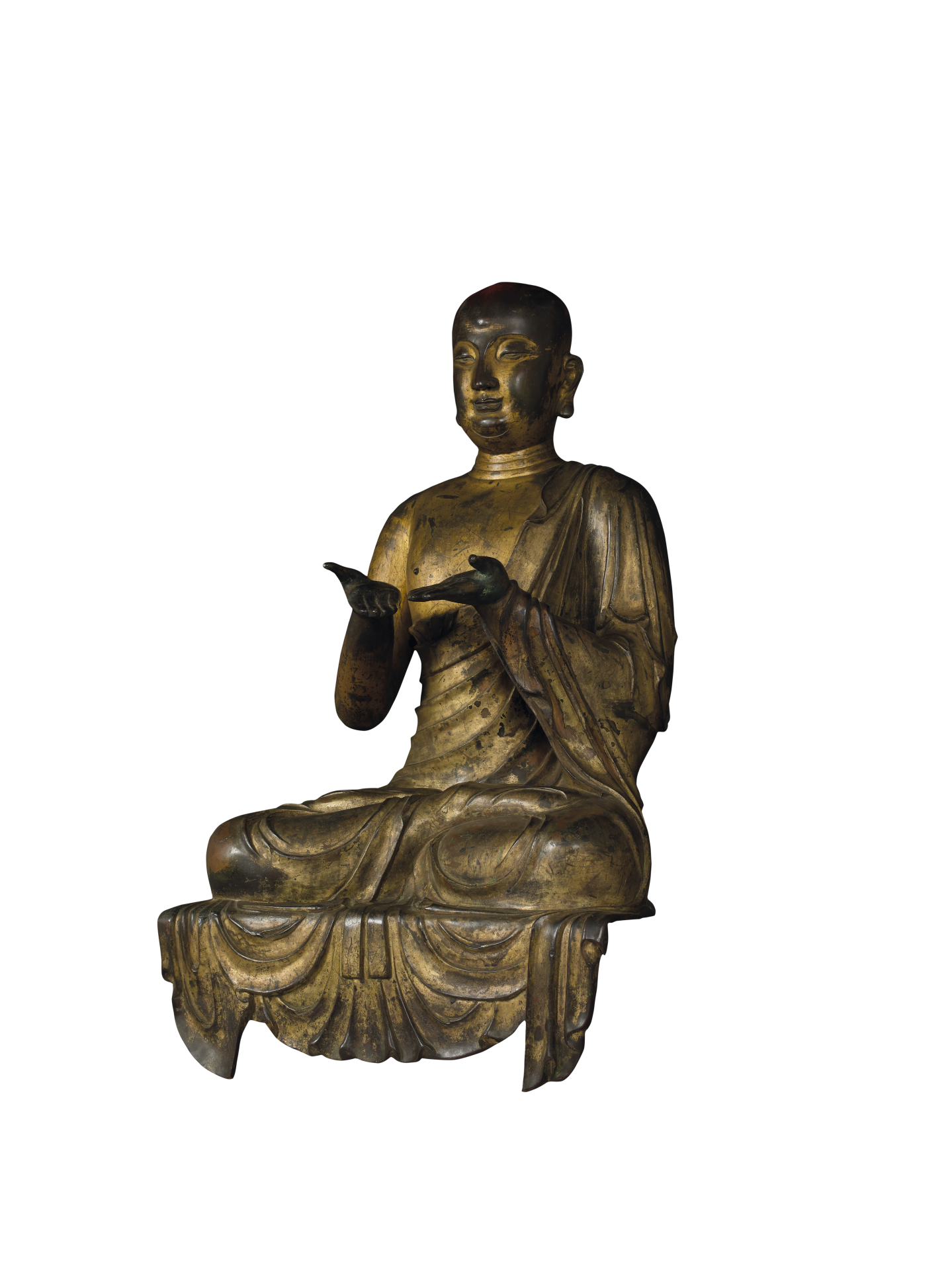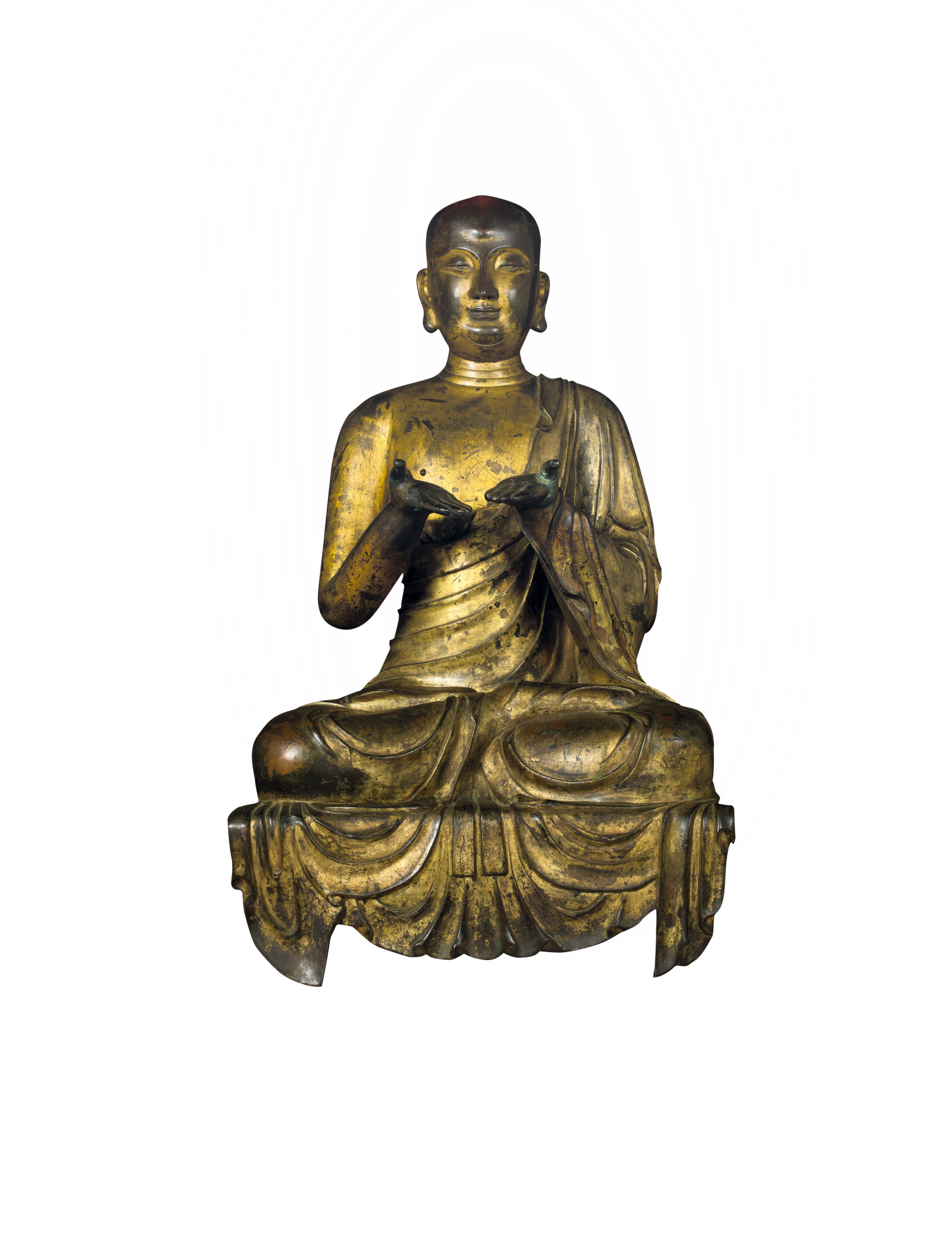Seated Luohan
The term arhat is commonly rendered as Luohan in Chinese though the word Yingzhen (a perfected person) is sometimes used. A Luohan is an individual who has attained the highest level of Hearers (śrāvakas). In early Buddhism, most Luohans were the enlightened disciples of Śākyamuni. They were beings who had removed all defilements and obtained the Six Kinds of Supernatural Abilities through practice. In Mahāyāna texts, before Śākyamuni entered parinirvāṇa, he requested 16 Great Luohans not to enter parinirvāṇa, but remain in the mortal world as Dharma protectors (Dharmapālas). Thus, apart from being practitioners, the Luohans are also associated with guarding the Buddhist Dharma, edifying sentient beings and removing perils.
This seated Luohan statue has an oval head, a youthful and handsome countenance, a high straight nose, downcast eyes and lips with lifted outer corners giving a smile. He wears a kāṣāya baring the right side of the body and is seated with legs locked in ‘lotus posture’ (padmāsana) and hands with palms up in front of the chest, probably holding an object which is now missing. He also has broad round shoulders, a narrow waist and a solid robust chest.
The statue is stylistically similar to the statuary produced or commissioned by the Ming court during the Yongle reign (1403-1424) and Xuande reign (1426-1435). For instance, the drapery represented by neat and fluid sinuous lines with distinct crests, the triangular folded end of the robe draping over the left shoulder, the angular articulation of the facial features carved in high relief as well as the elasticity of the body and skin are similar to the Yongle and Xuande statuary of the early Ming dynasty. Although no Luohan statue of the Yongle and Xuande reigns has been found so far, the impressive size and superb modelling technique demonstrated by this statue strongly suggest that it is closely related to the imperial atelier of the early Ming dynasty.

